Central locking system, detailed description
|
|
Central locking system, detailed description
|
The BCM is the control module containing all central locking system logic. The BCM sends lock commands on the bus. Each door module activates the central locking system motor in its door, the luggage compartment lock is activated by the REC and the fuel filler flap by the BCM. The remote receiver, which is in the CIM, checks that the remote control code is approved, identifies the remote control as well as the button pressed and how it has been pressed. The CIM then wakes the other systems on the I-bus and sends out information on the bus.
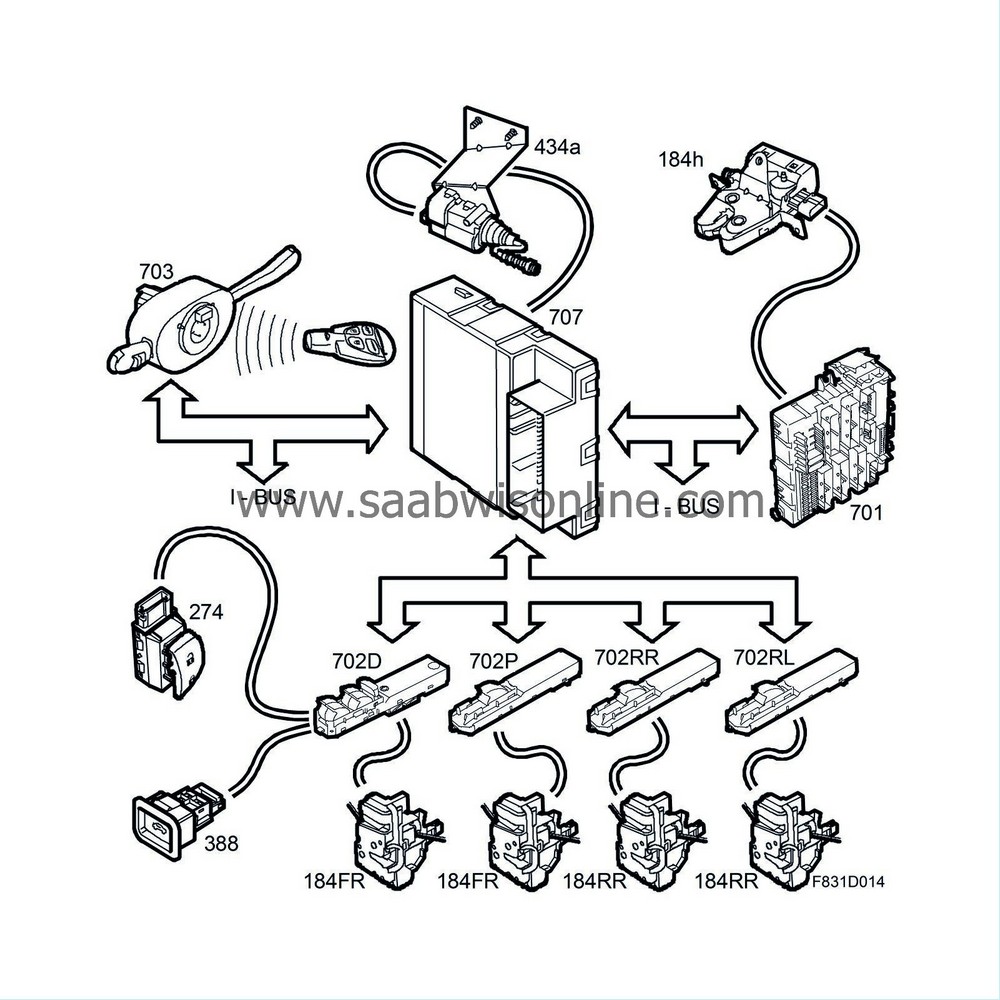
Theft Security Locking (TSL) is activated when the car is locked with the remote control. TSL is not available on the US/CA market. TSL is an option on all EU cars, except for those on the SE, GB, F, B and NL markets where TSL comes as standard. TSL is an additional lock mode that prevents the doors from being unlocked from inside the car.
TSL can only be deactivated with the remote control, with the exception of the left front door that can be unlocked with the emergency key. TSL activation with a double press of the remote control lock button can be selected with the diagnostic tool. If the key is inserted in the ignition, the door locks will change status from TSL active to locked. The doors can then be unlocked from inside the car with the central locking button in the front door.
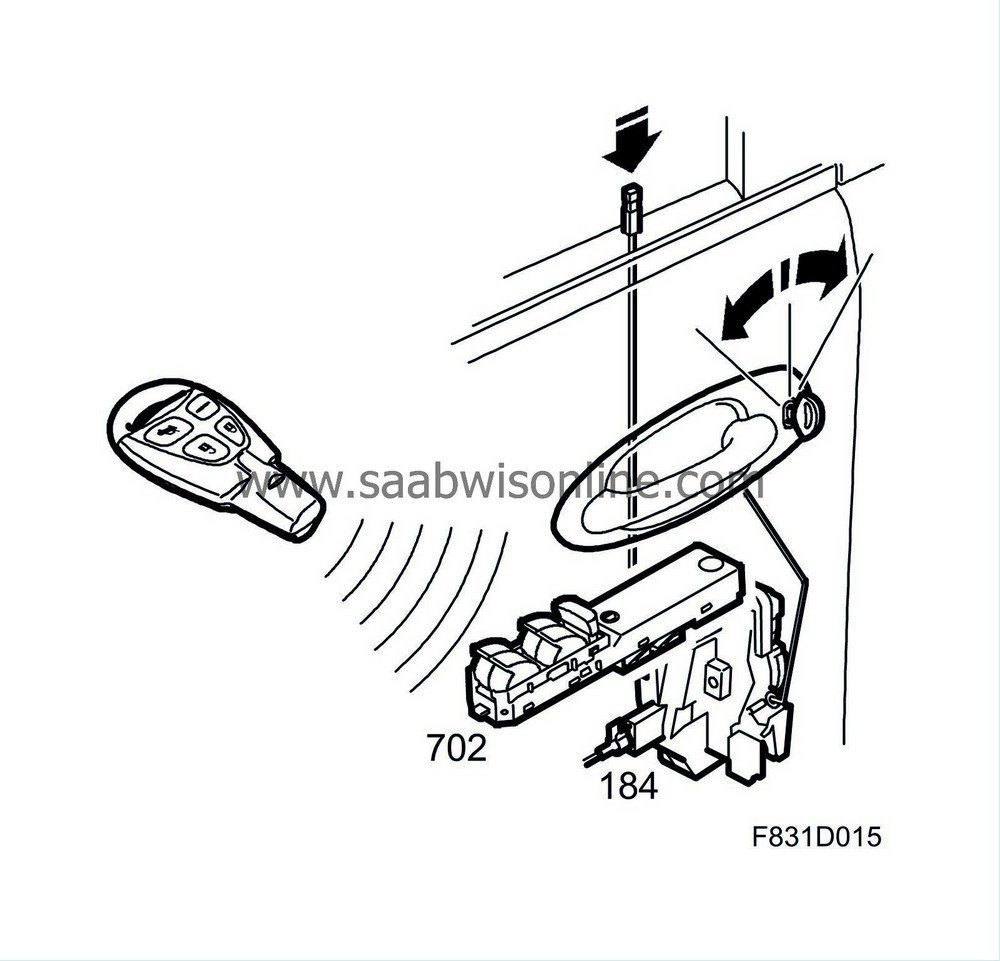
The left front door can be locked mechanically with the emergency key provided the door is closed. The emergency key can unlock the door even if it is TSL-active. All doors can be locked with the mechanical door lock knobs, but the driver's door must be closed. All doors can be unlocked in the same manner provided they are not TSL-active.

Locking with the cabin switches is blocked when battery voltage is below 9V. If the voltage drops below this level during locking, the BCM will send an unlocking command. If this is repeated 3 times during a 3-minute period, the locking attempts will be interrupted until the engine is started and the battery voltage exceeds 9V. The locks cannot be operated electrically when the starter motor is being operated.

The remote control has the following functions:
|
1.
|
Lock/Comfort closing (US/CA does not have comfort closing)

|
|
2.
|
Unlock/Comfort opening
|
The remote control receiver is located in the CIM. The receiver is shut down when vehicle speed exceeds 5 km/h in order to avoid being affected by the tyre pressure monitoring system. The receiver is also shut down in "transport mode", i.e. when the transport fuse in the UEC is removed so that the car shall have the lowest possible standing current consumption. BCM listens to the bus messages for depressed remote control buttons from the CIM till the remote control/starter key is put in the ignition and transponder approval. The way in which a button on the remote control is pressed is identified by the CIM in accordance with the following:
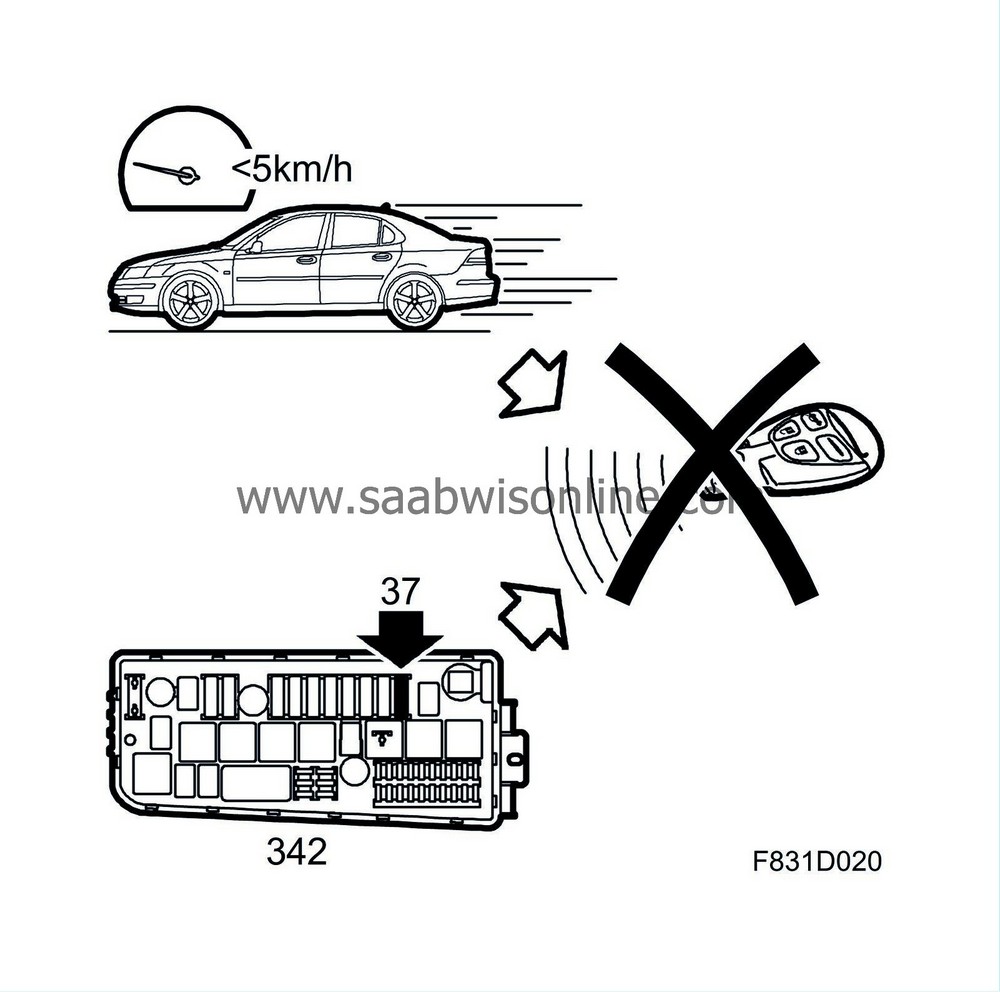
|
•
|
Single press less than 2s in duration
|
|
•
|
Double press when pressed twice within a period of 5s
|
|
•
|
Continuous press lasting longer than 2s
|
|
Remote control battery status
|
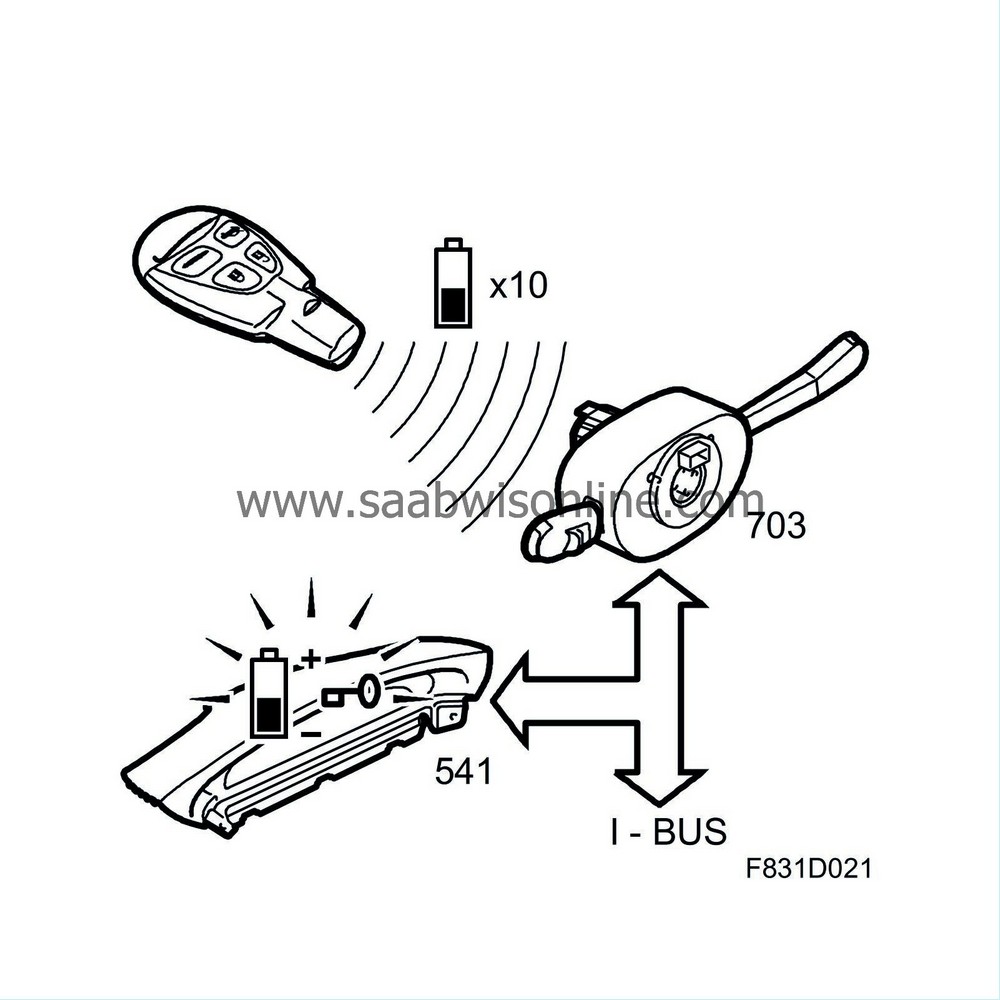
When the remote control is used, information is transferred regarding the remote control battery status. If the level from the same remote is too low 10 consecutive times, the CIM will send a message out on the bus. A weak battery is indicated in the SID.
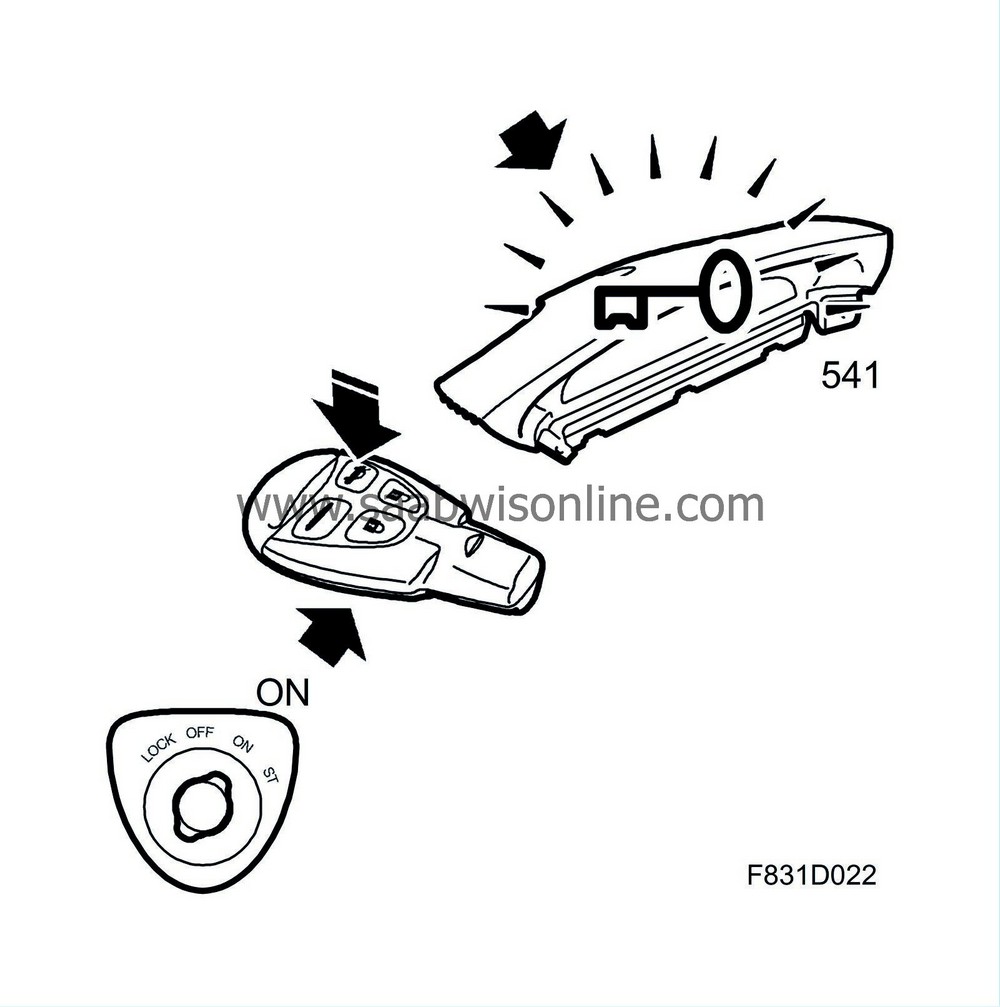
Key programming is carried out using the diagnostic tool. All keys must be available for programming. Both transponder and remote control are programmed in one sequence. 5 keys can be programmed. The number of programmed keys is displayed in SID if the button for boot lid opening is pressed when the ignition key is in the ON position. The car must also be stationary. For further information see
Key programming
|
Locking and unlocking doors with the remote control
|
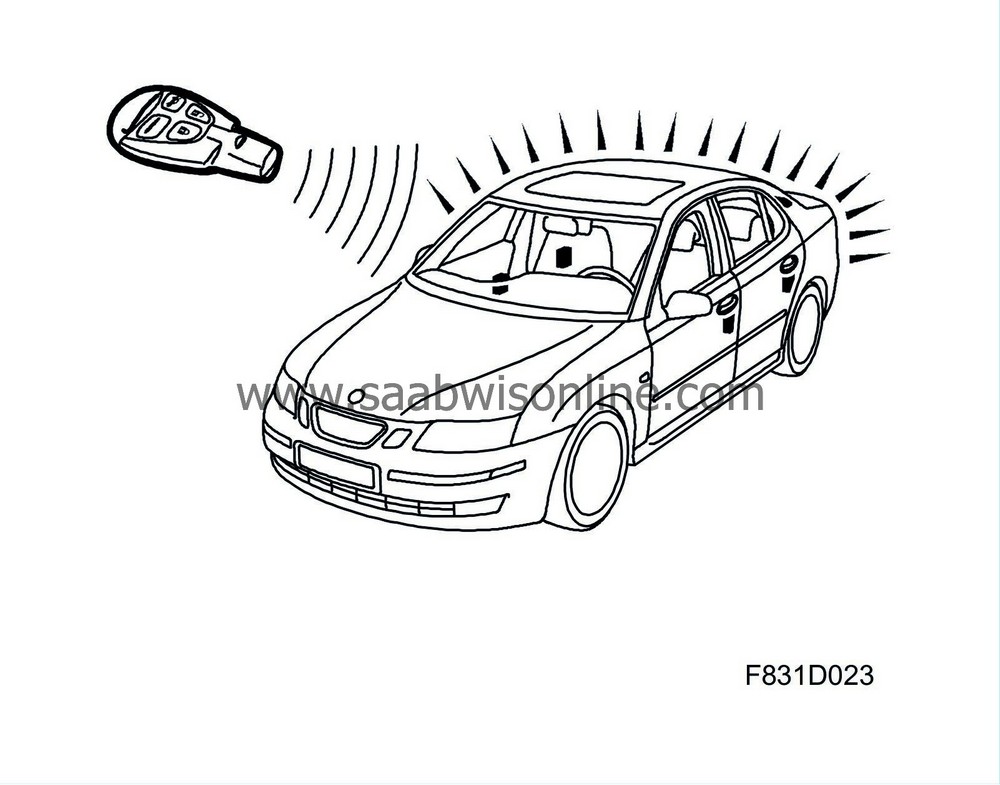
With TSL locking the driver's door must be closed. This also applies for US/CA which does not have the TSL function. Other doors lock and the car is then locked when these are closed. Locking or unlocking using the remote control can be confirmed with an acoustic signal and with the direction indicators (depending on market and selectable using the diagnostic tool). If the locking or unlocking does not work for any reason then no confirmation will be given. After locking with the remote control, the door buttons for the central locking system and the boot, as well as the switch in the boot lid handle, are disconnected.
4D
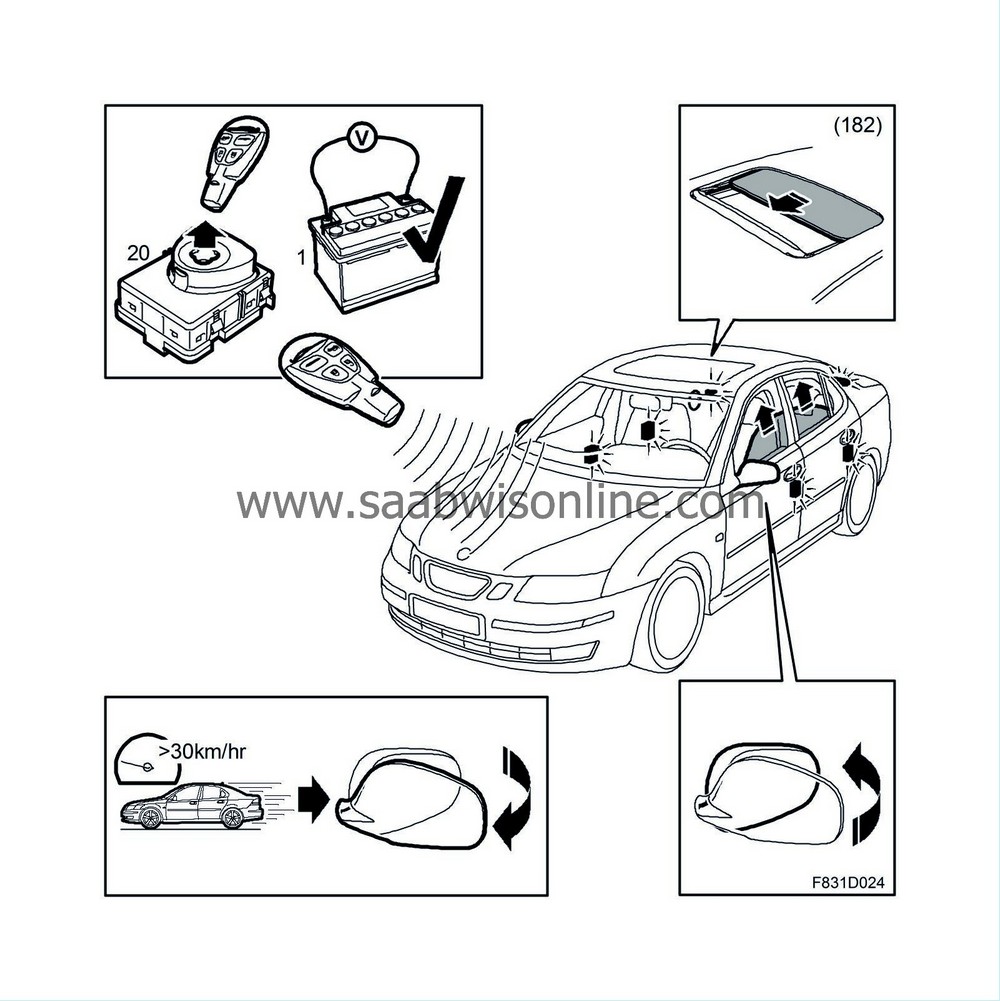
CV
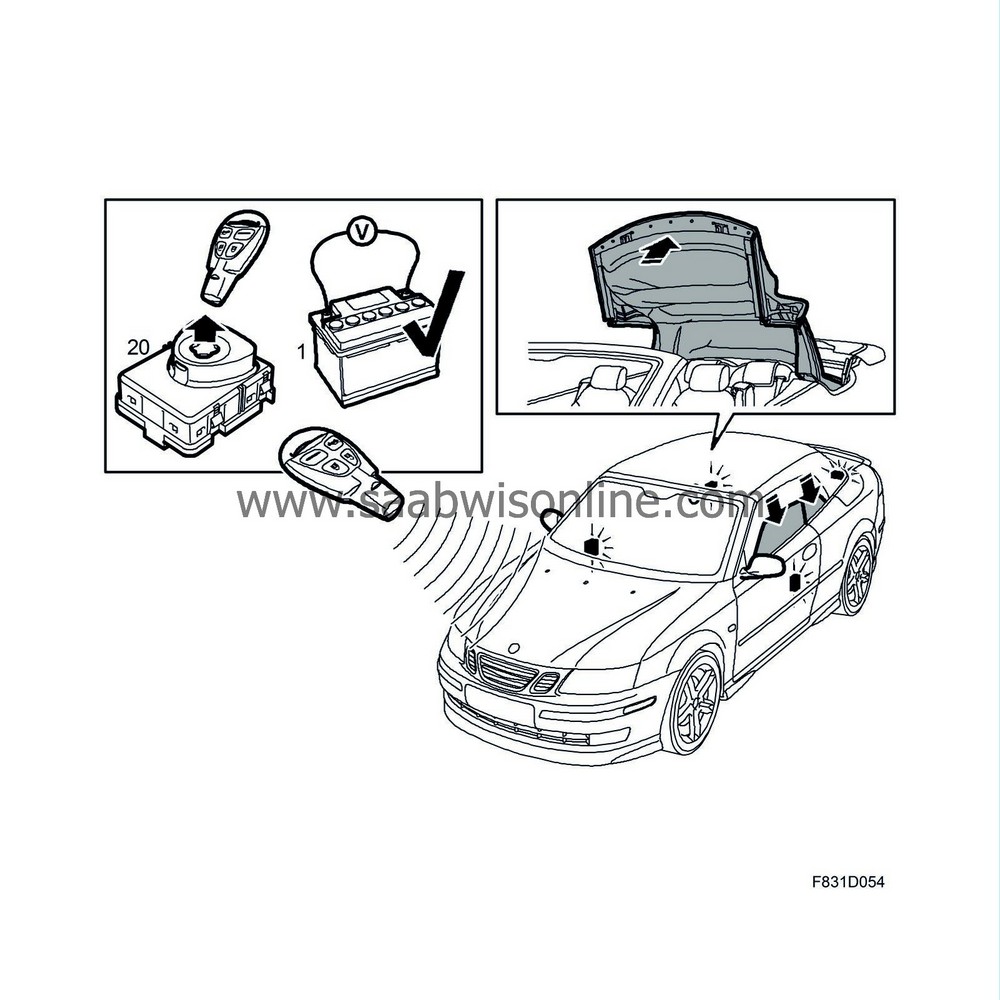
The function is available on cars which have pinch protection for the window lifts and can only be activated using the remote control on condition that the ignition is off and the battery voltage is OK. Comfort closing is not available in the US/CA market.
Comfort opening opens the windows and sunroof/soft top, but the mirrors are not folded out. The function is activated using the remote control's unlock button, which is pressed and held. When opening is complete and without fault this is confirmed with the ordinary indication for unlocking.
4D:
Comfort closing means that the windows are raised, the sunroof closed and the mirrors retracted (the function depends on how the car is equipped). The function is activated by pressing and holding in the remote control's lock button. When closing is complete and without fault this is confirmed with the ordinary indication for locking.
|
Remote control lock logic
|

Remote control not in the ignition switch
|
|
Lock (1)
|
Unlock (2)
|
Boot lid (3)
|
Panic (4)
|
|
One press
|
TSL locks all doors (not TSL for US/CA)
Locks fuel filler flap. (not US/CA)
Deactivates the boot lid handle, central locking buttons in the front doors and, for certain markets, the boot lid opening button in the driver's door.
Light confirmation (1) with the direction indicators.
|
US/CA:
Unlocks driver's door. Activates central locking buttons in the front doors and boot lid opening button in the driver's door
Light confirmation (2) with direction indicators and sound confirmation (2) from the siren. (option)
Other markets:
Unlocks all doors and the filler cap. Activates the boot lid handle, central locking buttons in the front doors. Light confirmation (2) with direction indicators (option)
|
Opens the bootlid. Confirmation (3) with the direction indicators.
|
Activates the Halo Light (if panic is not activated), panic alarm shut-off and Halo Light (if panic is activated)
|
|
Button released
|
Disengages comfort closing
|
Disengages comfort opening
|
|
|
|
Double press
|
No function. However, using the diagnostic tool the settings can be changed so that a single press locks the car without TSL and a double press locks the car and activates TSL (not US/CA).
|
US/CA:
Unlocks passenger doors and activates boot lid handle Note: In this case, the second press is not required within a specific time period that starts with the first press.
|
No function. However, using the diagnostic tool the settings can be changed so that a single press unlocks the bootlid and a double press unlocks and opens the bootlid (pop-up).
|
|
|
Continuous pressing
|
Comfort closing (windows, sunroof and folding in mirrors, not applicable to US/CA) (4D)
|
Comfort opening (opens windows and sunroof/soft top)
|
|
Activating panic alarm
|
Remote control in the ignition
|
|
Lock (1)
|
Unlock (2)
|
Boot lid (3)
|
Panic (4)
|
|
One press
|
|
|
Total number of programmed keys shown in the SID
|
Panic alarm shut-off
|
|
Central locking system door buttons
|
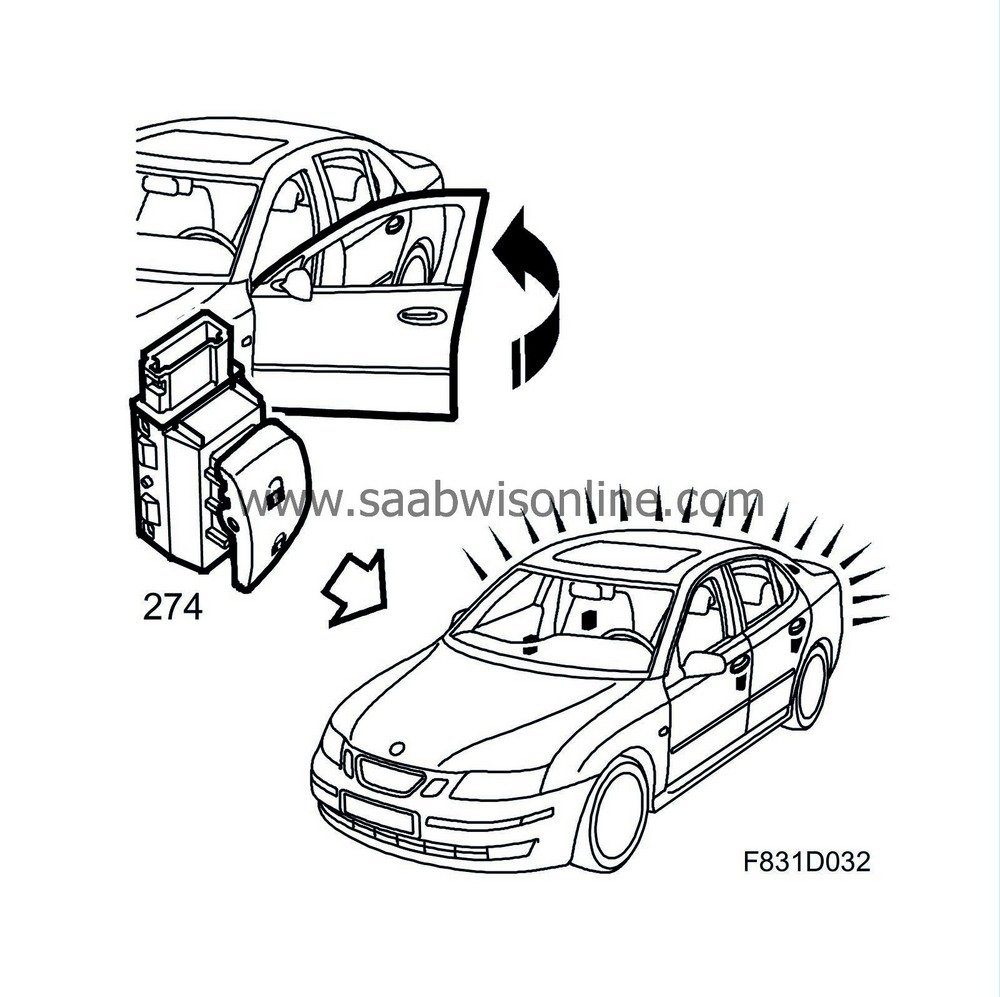
Both front doors have a central locking button for locking and unlocking. During locking, all doors are locked if the driver's door is closed. The switch in the boot lid handle is disengaged and the fuel filler flap locks (not US/CA). If any of the passenger doors are subsequently closed, they will remain locked. During unlocking of a car for the US/CA markets, only the door with an activated button will be unlocked with the first press of the button. When the button is pressed a second time, the other doors will be unlocked and the boot lid handle will be activated. For the other markets, all doors and the fuel filler flap will be unlocked and the boot lid handle will be activated with the first press of the button. The buttons are not active if the car is locked with the remote control.
|
Locking logic for boot lid
|
A single press of the button on the remote control opens the bootlid (pop-up). Other functions can be set using the diagnostic tool.
If the car is unlocked, the bootlid can be opened with the handle. This function can be adjusted using the diagnostic tool. On the US/CA market, the bootlid is locked even if the car has been unlocked.
US/CA
: There is a button in the driver's door which activates the boot lid handle with the first press. A double press opens the boot lid (pop-up). The button is inactive if the car is locked with the remote control or if the speed of the car exceeds 13 km/h.
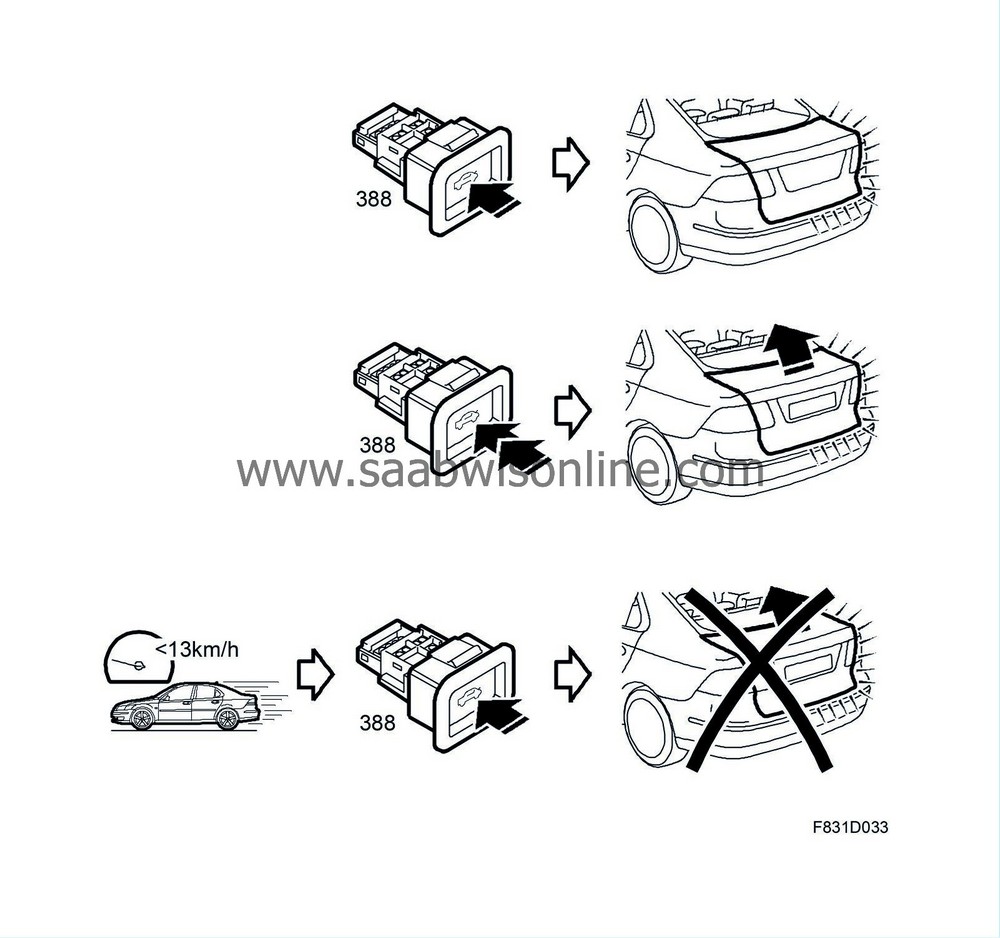
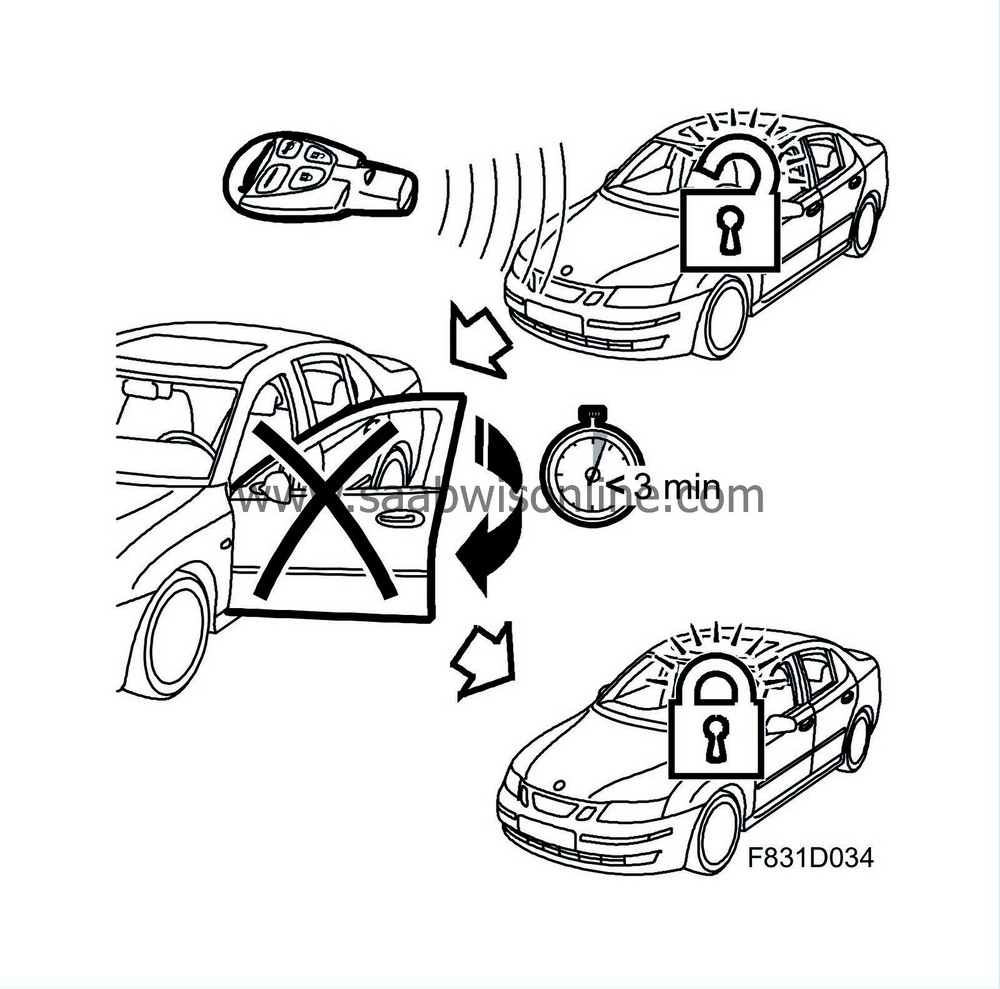
If the boot lid or any door is not opened within 3 minutes after remote control unlocking, the fuel filler flap, all doors and the boot lid will lock (market-dependent and selectable with the diagnostic tool). At the same time, the door buttons for the central locking system, boot lid and the boot lid handle switch are disengaged. The same functionality is initiated when locking with the remote control. No light or sound confirmation is indicated when using this locking method. The switch in the boot lid handle is disengaged 30 seconds after the boot lid is closed. This results in the boot lid being locked from the outside.

For certain markets, the central locking system can be controlled remotely via a telematic service (OnStar).


















